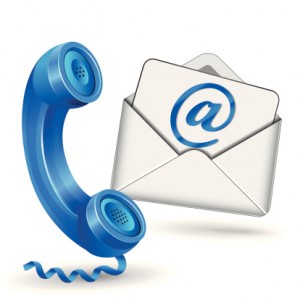 The evolution of marketing has caused a shift away from our traditional advertising strategies. The idea of “outbound marketing,” in which a business sends out a communication to their target market and hopes that they will receive it, has combined with the idea of “inbound marketing.” This concept focuses on earning a customer’s business through the use of social media and engaging information via blogs, videos, or whitepapers. By merging traditional outbound marketing practices with inbound, you can reach new audiences and promote business growth.
The evolution of marketing has caused a shift away from our traditional advertising strategies. The idea of “outbound marketing,” in which a business sends out a communication to their target market and hopes that they will receive it, has combined with the idea of “inbound marketing.” This concept focuses on earning a customer’s business through the use of social media and engaging information via blogs, videos, or whitepapers. By merging traditional outbound marketing practices with inbound, you can reach new audiences and promote business growth.
Inbound marketing has several advantages. It improves your search rankings since there is more content being regularly produced on your website. In addition, it can boost your bottom line. Business2Community claims that B2B companies that have a blog create 88% more visitors than those without.
But abandoning outbound marketing completely in favor of inbound is not wise. Outbound marketing is still a viable way to encourage customers to take action. In a survey of 1,000 IT executives, 75% said that they decided to go to an event or make an appointment after receiving a call or email.
Essentially, inbound marketing helps to bring in more potential customers who are actively seeking information, but outbound marketing remains a solid tactic for encouraging a client to take action — combine the two and it’s a win-win situation! You can combine inbound and outbound marketing strategies in three simple steps:
• Attract your ideal customer. While all visitors are good, bringing in the right visitors will ultimately lead to new clients. Figure out who your target audience is and research their goals, challenges, and needs — then use inbound marketing to make your content reflect that. Blogging is the most important way to draw prospective customers in, but also utilize social media, SEO optimization, and well-designed web pages to get them to return to your website for repeat visits.
• Convert to buyers. Now that you have interested customers that fit your target audience, it is time to hone in on those who are most interested in your product or service. But how? Your best strategy is having calls to action placed throughout your site — buttons or links that encourage your customer to take action, whether that is finding out more about a service or downloading a whitepaper. Linking to easy-to-navigate landing pages and forms allow visitors to submit their contact information. From there, your sales people can follow up through outbound communication and gain additional information.
• Continue to satisfy your customer. After an initial visit to your website, you want your viewers to continue to come back and use your content. A smart combination of inbound and outbound marketing practices can encourage customers to make repeat visits. Use tools like social media promotion and email newsletters with catchy headlines to continuously bring more viewers to your website. Utilize your sales people to determine when an outbound tactic, like a call or meeting, can be used to your best advantage.
By combining inbound and outbound strategies in your marketing efforts, you can maximize the number of people accessing your information and drive more visitors. Understanding the benefits of both, and using a marketing strategy that plays off their strengths can lead you to a better business.
Great content is the first step toward a great marketing strategy. Contact the professionals at Proven Systems at (800) 720-5398 or info@provensystems.com for a no-cost consultation.

As a budding digital marketing and current marketing analyst I found this piece particularly helpfull. Thank you for sharing!